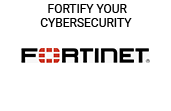
The payments giant’s partnership with Circle marks a pivotal step in bringing regulated digital currencies into mainstream commerce across emerging markets.
Mastercard is accelerating its digital assets strategy across EEMEA with the introduction of its first stablecoin settlement capability in partnership with Circle. The move brings regulated stablecoins — including USDC and EURC — into the company’s global settlement network, enabling acquirers and issuers in the region to settle transactions using digital currencies backed by fully reserved assets. AFS and Eazy Financial Services are the first partners to benefit from the rollout.
Prakriti Singh, Executive Vice President for Core Payments in EEMEA, says the initiative represents a decisive step in making stablecoins practical and safe for everyday financial services. By combining Mastercard’s established security, compliance, and global acceptance framework with blockchain-native assets, the company aims to close the gap between traditional finance and the fast-evolving Web3 ecosystem.
Interview Excerpts:
How will Mastercard’s partnership with Circle for stablecoin settlements transform experiences for merchants and acquirers in EEMEA?
We’re integrating stablecoins into mainstream finance by combining our security and compliance expertise with blockchain innovation. Our partnership with Circle marks the first stablecoin settlement capability in the region, allowing acquirers and issuers to settle in USDC or EURC—regulated, fully reserved stablecoins. AFS and Eazy Financial Services are the first beneficiaries. This initiative bridges traditional finance and Web3, enabling faster, trusted digital trade across emerging markets. Alongside Circle, we’re also collaborating with Paxos, Fiserv, and PayPal to expand multi-coin settlement options and strengthen our role in the evolving digital currency ecosystem.
How will the use of USDC and EURC stablecoins make settlement processes faster, more secure, and more cost-effective compared to traditional methods?
The technology powering stablecoins offers multiple benefits, like high speed, 24/7 availability, low costs, programmability, and immutability. However, those alone do not suffice to turn stablecoins into a payment tool. Just as important, or even more so, are other attributes: a seamless and predictable user experience, reach and wide distribution, global acceptance by merchants based on robust standards, high conversion rates, multilayered security against fraud and scams, compliance with local laws and regulations, reliability, and consumer protection. These are the same principles that have made Mastercard card payments trusted by billions – and now we are extending them to stablecoins. Unlike many cryptocurrencies, the appeal of USDC and EURC is their stability. We’re starting by connecting stablecoins to our network just like any other currency. This is just the first step on our journey of enabling selected digital assets on our network.
“Scaling stablecoins will fundamentally be about utility to consumers and businesses, as well as interoperability between the existing financial system and this innovative payment method.”
In what ways stablecoins reshape remittances, particularly across high-volume EEMEA corridors, where speed and cost are critical?
Stablecoins are built using blockchain technology instead of traditional banking infrastructure. That means they could make sending money across borders much faster, cheaper, and more transparent. They can also drive new efficiencies by eliminating the need to switch from one currency to another and go through different banking systems. We will enable financial institutions and digital wallets to send and receive stablecoins seamlessly through Mastercard Move, our comprehensive portfolio of money movement capabilities. As the world of digital assets continues to evolve, embracing a variety of stablecoins tailored to specific currencies emerges as a pivotal strategy for unlocking new possibilities and ensuring a robust and inclusive financial future. With near-real-time transfers in 150 currencies to over 10 billion endpoints across nearly 200 countries and territories, Mastercard provides unmatched reach. By embedding stablecoins in this trusted infrastructure, we can enhance the efficiency of remittances while ensuring transparency and compliance.
With central banks exploring CBDCs, how do you see stablecoins coexisting with or complementing these government-backed digital currencies?
CBDCs, which are equivalent in value to a country’s legal tender, are designed to be used as a form of digital money that can pay for things. Unlike private stablecoins, CBDCs would be issued by a country’s central bank and would carry the same guarantee as paper currency. Ultimately, we see the future as hybrid – where traditional finance, CBDCs, and Web3 solutions coexist, compete, and collaborate. Mastercard’s role is to ensure interoperability, trust, and consumer protection across all forms of digital money.
Looking ahead, what adoption trends and opportunities do you see shaping the future of digital money and payments in the region?
Tokenisation holds the potential to accelerate innovation across physical and digital commerce by strengthening security and trust in the digital ecosystem. Every week, over a billion tokenised transactions are processed on the Mastercard network. We aim to tokenise every transaction on our network by 2030, phasing out manual card entry. We also see consumers increasingly shifting from traditional search engines to AI for product discovery and purchases. Agentic AI enables merchants to offer a meaningful and consistent shopping experience, layering on relevant and personalised benefits, such as recommended products, free delivery, rewards, and discounts. Earlier this year, we launched Mastercard Agent Pay that uses agentic AI to deliver smarter, secure, and more personal payment experiences. In this dynamic landscape, we remain focused on stability, compliance, and consumer protection – the pillars of Mastercard’s digital assets strategy. Our role is to partner across the ecosystem, helping banks, fintech companies, regulators, and businesses harness the potential of tokenisation and blockchain to unlock new opportunities.




